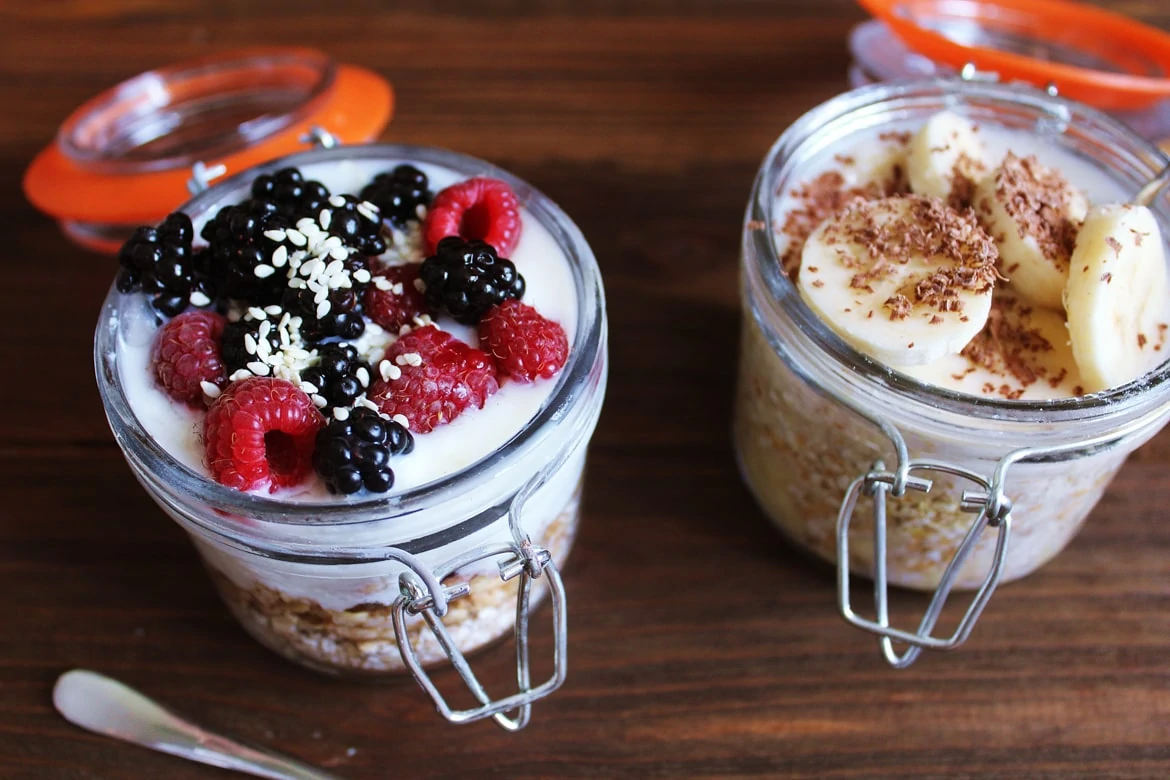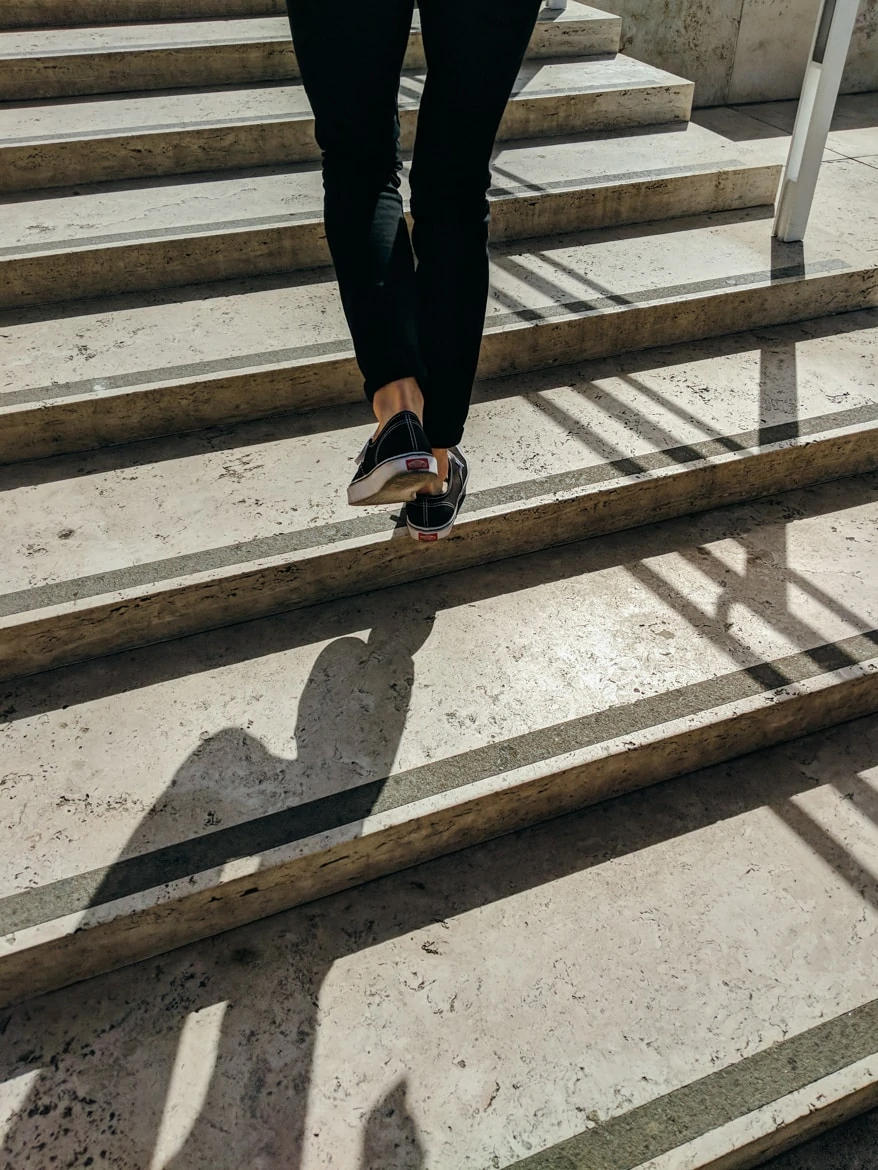Struggling With Bloating? 5 Ways To Banish The Bloat And Get Relief
Do you find your belly balloons after meals? Or perhaps you experience loud (and at times embarrassing) gut noises. Well, you’re not alone! In fact, one in four Canadians complain about bloating and gas. Read on for five surprising reasons you’re struggling with bloating — plus tips on how to banish the bloat and feel better!
What is bloating and why does it wreck havoc on how you feel?

So, let’s talk about the numerous reasons why excessive gas and bloating may occur:
- Irregular meals or too much food
- Constipation
- Not getting enough fibre
- Swallowing too much air
- Carbonated beverages
- Lack of activity
And chronic bloating may be the result of underlying issues such as intolerance to certain carbohydrates or medical conditions, including Irritable Bowel Syndrome (IBS) and celiac disease.
Bear in mind, it’s not always easy to find answers. At times, the cause of bloating may remain unknown.
The good news is, that certain dietary and lifestyle changes may help to get rid of or dwindle gas and bloating.
Tips to relieve bloating
1. Avoid skipping meals
Do you have regular meals? Perhaps your daily schedule impacts your eating pattern. For instance, some of us (including myself), have a different eating schedule on weekends; I find myself eating meals slighter later – especially when out and about. Some experts argue that having regular meals may help to keep bloating at bay by keeping the digestive system active – stimulating intestinal movements and promoting regular visits to the bathroom. The key thing is to prevent constipation – which can otherwise result in gas and bloating.
And this leads me to the next tip…

2. Eat more fibre – but take it slow!
You’ve probably heard that fibre helps keep you regular! There are, in fact, two types of fibre you should consider: soluble fibre and insoluble fibre. It’s the insoluble fibre that matters most here; not only does it add bulk to stool but also promotes regular bowel movements. To prevent constipation, you want to eat foods rich in fiber. Think whole grains, beans and lentils, nuts and seeds, vegetables and fruits. It’s recommended that women and men should strive for anywhere between 25 – 38 g of fiber per day. Simple steps like sprinkling flax seeds and chia seeds over breakfast cereals and salads are great ways to boost your intake! I would advise against any drastic changes to your fiber intake, though. If you’re not used to high fiber foods, and suddenly start eating a lot of fruit, salads, and bran cereals – you’re going to be significantly bloated. And make sure you’re adequately hydrated; fiber absorbs water, which will help soften your stools – to prevent constipation.
3. Avoid Swallowing Air
Remember the time when your mamma told you not to talk while you eat? She wasn’t kidding! Swallowing excessive air, aka Aerophagia, whilst eating (and that includes chewing gum), is a common cause of gas and bloating. The solution? Avoid talking when you chew, and practice mindful eating; enjoy food with intention and attention. Eat slowly to minimize gulping excessive air, and don’t overdo it in the gum department. When drinking liquids, you want to minimize the use of straws, cans and bottles, as these can aggravate bloating for some people. Apparently, the temperature of your drinks matters too! Drinking lukewarm liquids instead of hot ones may help ease bloating, since you’re more likely to swallow air with hot drinks. Did you know that one?
4 .Cut back or avoid problematic foods
You know yourself best. Avoiding foods known to cause bloating can help reduce most symptoms. Fried and greasy foods, caffeine, spicy foods, wheat, milk and dairy, alcohol, carbonated beverages, beans, onions, cabbage and broccoli (cruciferous vegetables) are commonly reported to be problematic foods. The simple task of identifying trigger foods can feel overwhelming. It’s helpful to adopt a systematic approach, like keeping a food and symptom diary. This can provide insight; making it easier to spot patterns. It’s important to bear in mind that nutritious foods, such as beans and cruciferous vegetables, should be included as part of a healthy balanced diet. If these foods are giving you digestive troubles, talk to a registered dietitian, your doctor or pharmacist. You may benefit from using medication such as Beano® and Lactase tablets to aid digestion. And if you read my previous blog post, you’ll know that gut health has an immense influence on our overall health – it could be that yours needs closer attention.

5. Get Moving
And lets not forget the uber-important lifestyle factors like getting regular physical activity. People are often surprised to hear that “activity” helps to move food through your digestive tract. Try to walk more and take the stairs – whenever possible. Lunch time can be a great time to fit in a brisk walk to beat the bloat. In fact, there are heaps more benefits of physical activity. This study found that workers reported mental benefits after a walk. Many had increased enthusiasm, felt more relaxed, and were less nervous after a 30-minute walk at lunchtime.
*If you experience extreme bloating along with pain, you should should consult your doctor.
Love to hear what works for you. How do you manage symptoms of bloating? Leave me a comment below!
References
- Sullivan, S. N. (2012). Functional abdominal bloating with distention. ISRN gastroenterology, 2012.
- Hunt, R., Quigley, E., Abbas, Z., Eliakim, A., Emmanuel, A., Goh, K. L., … & Whorwell, P. (2014). Coping with common gastrointestinal symptoms in the community: a global perspective on heartburn, constipation, bloating, and abdominal pain/discomfort May 2013. Journal of clinical gastroenterology, 48(7), 567-578.
- Changes in work affect in response to lunchtime walking in previously physically inactive employees: A randomized trial: https://onlinelibrary.wiley.com/doi/abs/10.1111/sms.12398
Thank you to Sanaz Baradaran MSc, BEd, RD for contributing to this blog post. Go give Sanaz a follow on Instagram






